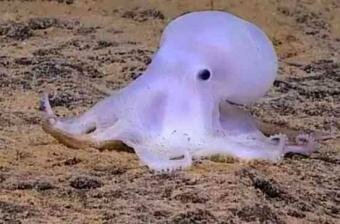In an Android security advisory published last Friday, Google officials have warned the Android users about a security vulnerability which can...

This year’s first operational dive of Okeanos Explorer has come across the discovery of a new octopod. This is what the National Oceanic and Atmospheric Administration scientists believe.
During the first dive of the 2016 season on February 27, it explored depths of more than 4,000 meters northeast of Necker Island in the Hawaiian Archipelago.
The motive behind the dive was the collection of baseline information and a probable link between Necker Island and Necker Ridge. It was to collect samples to find out if they possess the same composition. However, during the dive, ROV Deep Discoverer also examined biological communities.
As per NOAA’s Michael Vecchione, the ROV was crossing a flat rock area interspersed with sediments at 4,290 meters when it found an octopod present on a flat rock that had a light sediment coat.
Vecchione said the octopus didn’t seem with strong muscles and had no pigment cell, which made it look like ‘ghost-like’. Vecchione also observed that the octopod wasn’t like any published records. As per Vecchione, it was the deepest observation ever for this kind of cephalopod.
It is believed that the octopod belongs to the group of the incirte octopods. These octopods don’t have fins and cirri, and look quite like shallow water Octopus.
There have been reports of Cirrate octopods located in depths of more than 5,000 meters. But, the deepest appeared reports for incirrates are all not more than 4,000 meters.
Vecchinoe wrote on the NOAA website, “After seeing this observation, I contacted my colleagues Louise Allcock (currently on a British ship near Antarctica) and Uwe Piatkowski (from Germany) and they agreed that this is something unusual and is a depth record for the incirrate octopods”.










